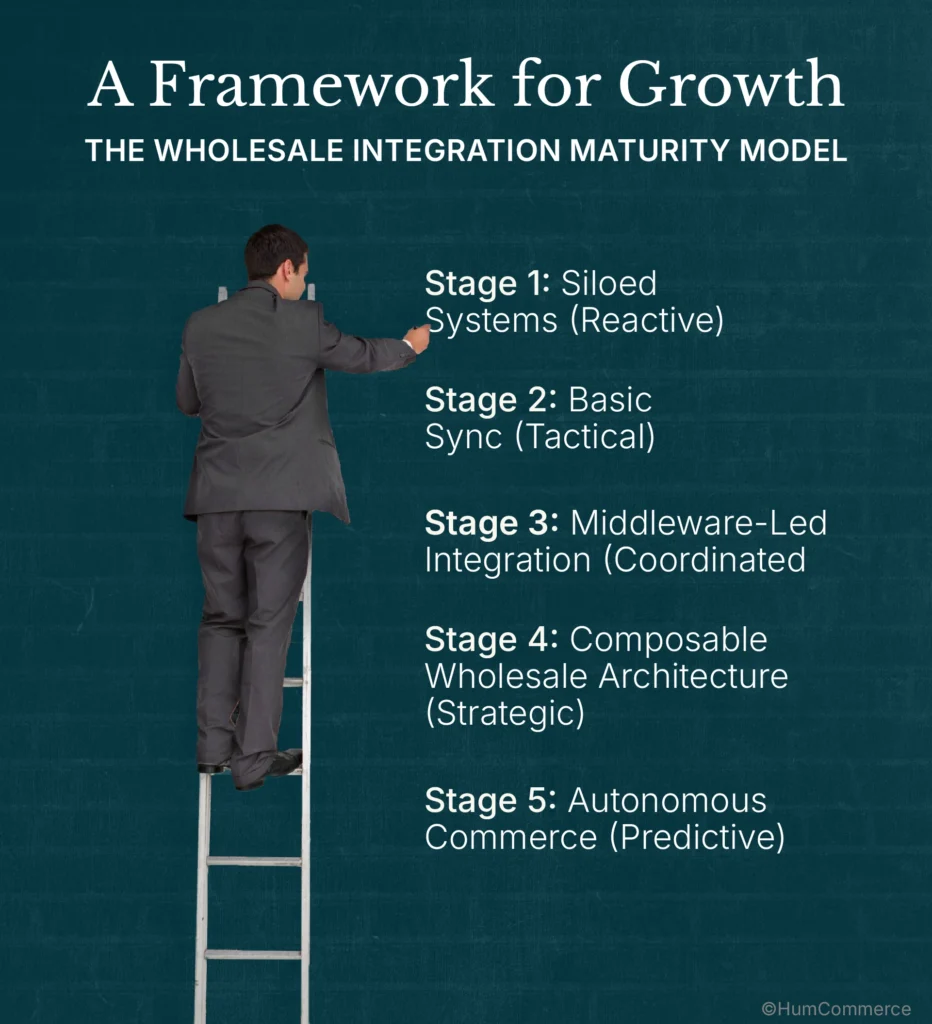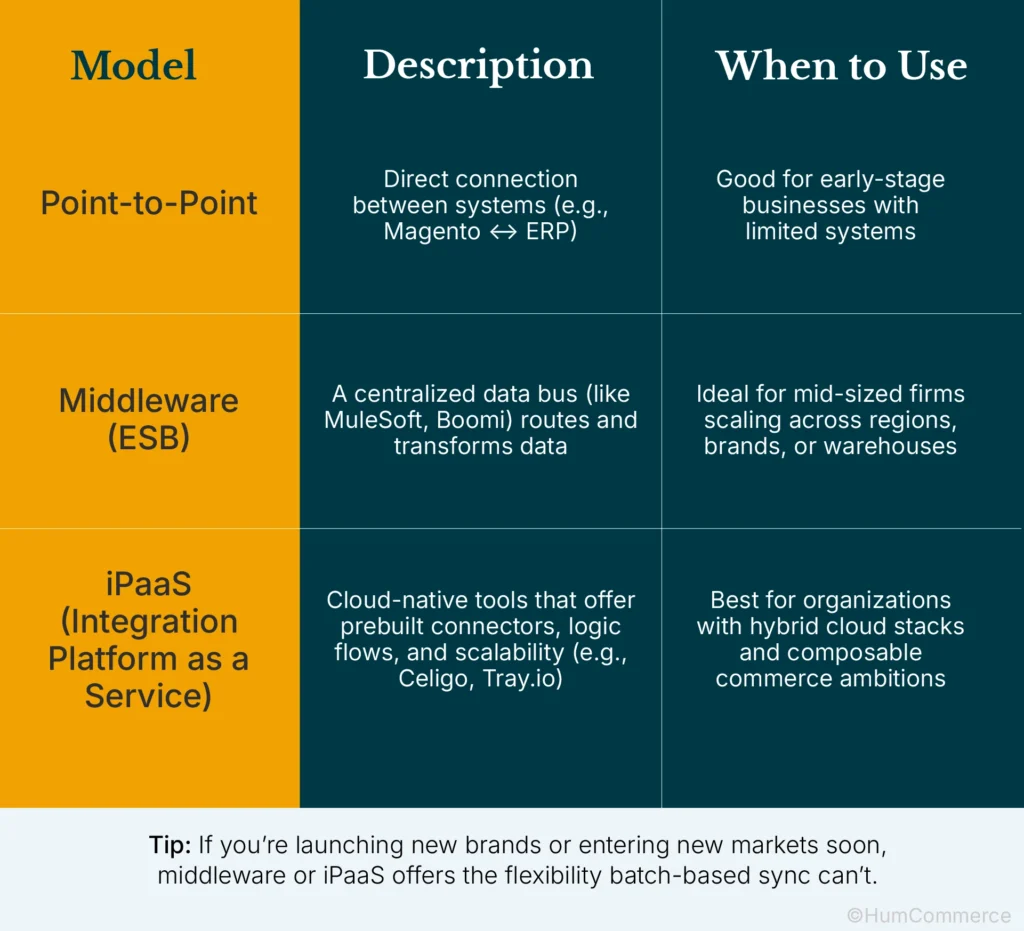Key Takeaways
- Disconnected systems silently slow down wholesale operations
- Magento works best when integrated with PIM and ERP tools
- Integration leads to cleaner data, faster fulfilment, and happier customers
- Businesses can reduce SKU onboarding time and increase retention through automation
- Magento isn’t just a storefront — it’s a data orchestrator
- Integration success depends on clear ownership, aligned teams, and smart middleware choices
In North America’s competitive wholesale landscape, scaling isn’t just a growth strategy, rather a survival requirement.
But most wholesalers don’t struggle because of weak demand or inefficient teams. They struggle because their systems aren’t speaking the same language.
Inventory sits in one silo. Pricing rules end up somewhere else. Product information? It’s either buried deep inside spreadsheets or stuck inside software that refuses to play nice.
Meanwhile, buyers expect everything to be fast, accurate, and smooth — and these disconnected systems quietly get in the way. They delay fulfillment, cause data slip-ups, and chip away at customer trust, one order at a time.
This becomes a structural barrier to profitable growth.
At HumCommerce, we’ve seen this pattern across industries — from automotive and pharmaceuticals to construction and industrial supply. The difference between companies that scale and those that stall often comes down to one thing:
A connected eCommerce stack.
In this article, we’ll dive into a smarter way to connect your systems — one built to handle the real-world messiness of wholesale, shaped by architecture strategy, and geared to drive real agility, precision, and growth.
And no, we’re not just talking about hooking Magento up to your ERP or PIM and calling it a day. We’re talking about building a whole infrastructure where data moves without friction, teams stay in sync, and your business shifts from playing catch-up to setting the pace.
A Framework for Growth – The Wholesale Integration Maturity Model

Where Are You on the Wholesale Integration Maturity Curve?
Not all integrations are built the same. Some wholesalers are still stuck running nightly batch updates to keep systems in check. Others have leveled up, making real-time data sync the engine that powers their business.
The real difference? It’s not about the tech you pick, it’s about how mature your architecture really is.
Here’s how the maturity journey plays out:
Stage 1: Siloed Systems (Reactive)
- Manual work everywhere.
- SKU data hiding in spreadsheets.
- Pricing managed offline… when it gets managed at all.
- IT is in patchwork mode, not in strategy mode.
You’ll feel it: order mistakes, shipping delays, and a customer experience that’s all over the place.
Stage 2: Basic Sync (Tactical)
- Systems talk, but only through point-to-point fixes (ERP ↔ Magento).
- Data still moves in slow, nightly batches.
- Teams manually clean up messes after the fact.
- Scaling feels more like adding chaos, not efficiency.
It’s a step forward, but it breaks easily under pressure.
Stage 3: Middleware-Led Integration (Coordinated)
- Middleware (like Celigo or Boomi) connects PIM, ERP, and eCommerce.
- Product data gets created once and published everywhere.
- Inventory and pricing update almost in real-time.
- Automation starts cutting out manual busywork.
Big shift: You stop putting out fires and start building real flow.
Stage 4: Composable Wholesale Architecture (Strategic)
- Systems are modular — picked for what they do best, not because they “kinda fit.”
- Clear rules: ERP owns pricing and inventory, PIM owns product info, eCommerce owns experience.
- Custom APIs handle the weird edge cases.
- Data is finally managed like an asset, not an afterthought.
Efficiency meets flexibility and you feel it.
Stage 5: Autonomous Commerce (Predictive)
- AI steps in, tweaking prices, predicting demand, and recommending products on the fly.
- Smart rules automatically trigger cross-system updates.
- Teams shift from fighting fires to fine-tuning growth.
From just integrated… to truly intelligent.
Why This Matters: The maturity model is a blueprint for transformation. Knowing your stage helps you prioritize the right systems, the right people, and the right next steps. Most importantly, it gives your IT and business leaders a common language to rally around.
Want to know your current stage?
We’ll help you assess your stack — and map the shortest path to composable scale.
Aligning the Core – What Each System Should Really Handle in a Connected Stack
ERP, PIM, and eCommerce — Clear Roles, No Confusion
Most integration failures don’t happen because the software is bad. They happen because no one’s clear on who’s doing what.
In top-performing wholesale operations, it’s not just about connecting systems. It’s about each system knowing exactly what it owns and where it should stay out of the way.
(H3) ERP – Your Operational Backbone
Let’s be real: the ERP isn’t glamorous. But it’s where the heavy lifting happens, running things like:
- Keeping stock levels sharp and accurate across warehouses
- Managing complex pricing setups — whether it’s tiered discounts, custom contracts, or flash promotions
- Driving the entire order lifecycle: from procurement to invoicing, and everything in between
- Handling supplier data, warehouse logistics, and multi-location inventory — often without much applause
In a truly connected system, the ERP isn’t just a passive database. It becomes the nerve center, setting off workflows that pull everything else into motion — fulfillment, pricing, even customer updates.
PIM – The Product Data Brain
Your PIM doesn’t sell products. Rather it makes them sellable.
For wholesalers managing thousands of SKUs across channels and regions, the PIM is where:
- Core specs, attributes, translations, and compliance fields are stored
- Digital assets (images, PDFs, 3D files) are managed
- Product taxonomies are structured for syndication
When product data is centralized here, you avoid SKU sprawl, maintain regulatory compliance, and update once for many outputs — from storefronts to printed catalogs to reseller feeds.
Key Integration Role: The PIM syndicates clean, validated content to all customer-facing systems — including Magento, marketplaces, and punchout catalogs.
eCommerce Platform – The Experience Orchestrator
Your eCommerce engine isn’t a database — it’s an interface.
This platform:
- Delivers personalized experiences for buyers
- Displays real-time availability and contract pricing
- Captures bulk orders, RFQs, or reorders
- Integrates with CRM and marketing tools to enhance lifetime value
Whether you use Adobe Commerce, Shopify Plus, or a headless frontend, the eCommerce layer is only as effective as the data flowing into it.
Key role for eCommerce: It shouldn’t hoard your core data. It should just distribute it — fast, accurately, and consistently across every channel and device.
Small but powerful insight: The #1 reason integration projects go sideways? Nobody sets clear ownership early enough.
Before you buy a single tool or call a vendor, get brutally clear on which system owns what. Then (and only then) should you design your architecture and middleware strategy.
When Integration Works — Real Complexity, Real Control
How a Well-Oiled Stack Handles Real Wholesale Chaos
When integration is more than just syncing fields, it changes how your business breathes, especially when complexity piles up. Here’s how smart architecture plays out in real life:
Scenario 1 — Keeping Pharma Compliance from Becoming a Bottleneck
Imagine you’re scaling a pharma business. You’ve got DSCSA rules breathing down your neck.
Suppliers are sending updates at different times, with different formats.
And somehow, your product listings still need to show serial numbers, batch tracking, expiration dates, FDA label sets — every week, across all channels.
When it’s all wired up correctly, here’s what happens behind the scenes:
- PIM pulls clean supplier updates (XML) and automatically flags anything missing regulatory data.
- The ERP quietly runs the show on serialized inventory — matching batches, organizing pick lists, and cutting out the old-school cross-checking headaches.
- Meanwhile, your eCommerce site only shows SKUs that have cleared compliance hurdles — no messy surprises, no shortcuts.
- And compliance documents? They’re not somebody’s side project anymore; they flow directly into portals and punchout catalogs — exactly where buyers expect to find them.
What you’ll feel on the ground:
- Manual compliance audits stop eating everyone’s sanity.
- New products roll out quicker like days, not weeks.
- And maybe best of all? Your legal team stops bracing for disaster every time you scale a new product line.
Scenario 2 — Real-World Pricing Across Borders
Expanding into the US, UK, and Germany sounds like growth on paper… until you realize each region speaks a different language when it comes to taxes, FX rates, and pricing rules.
Meanwhile, your sales team? Still quoting off dusty PDFs because the systems haven’t caught up.
Here’s how you fix it without losing your mind:
- Let the ERP call the shots on FX rates, tax rules, and contract-specific discounts — no more spreadsheets flying around.
- Middleware acts like your silent middleman, syncing updates into Magento every day, without clogging your team’s calendar.
- Storefronts show the right price dynamically, tailored by customer location and contract — not cobbled together manually at the last minute.
The real payoff
- Way fewer pricing screw-ups.
- Regional launches that don’t implode Finance.
- And for once, Sales, Ops, and Marketing actually agree on pricing.
Scenario 3 — Juggling 10,000 SKUs (and Staying Sane)
Trying to manage 10,000 SKUs across storefronts, marketplaces, and custom portals?
It’s a lot, especially when every channel demands its own flavor of content: CSVs here, XMLs there, PDFs for reps, localized product descriptions everywhere.
The smart move? Build a PIM-powered foundation that sends the right content, in the right format, to the right place automatically.
No clone armies needed. No hair-pulling required.
- Magento pulls localized content straight from PIM, no heavy lifting.
- Sales tools auto-generate ready-to-go PDFs and spec sheets.
- Marketplaces get tailored SKU feeds designed for faster search pickup.
Result
- One team manages it all.
- Update cycles shrink from weeks to hours.
- Adding new channels doesn’t mean hiring new bodies.
Scenario 4 — Making Returns Less of a Black Hole
Returns used to be chaos. Sales approved returns without checking stock, CSRs issued random credit notes, Ops had no idea when (or if) stuff would come back.
The smarter fix
- Magento triggers RMAs with reason codes from the jump.
- ERP cross-checks warranties and stock histories before approvals happen.
- PIM flags anything that needs inspection or reapproval before resale.
- All portals update automatically so customers aren’t left guessing.
What changes
- Returns don’t clog up the system anymore.
- Credit gets issued correctly the first time.
- CSRs actually have the answers customers need, right when they ask.
This Is What Strategic Integration Looks Like
At HumCommerce, we solve challenges like these every day.
Because in wholesale, growth gets blocked by disconnected systems, not so much by a lack of demand. And when you fix that? You leap ahead.
Designing for Scale — How Smart Architecture Sets the Stage for Growth
Don’t Just Connect Systems — Architect for Resilience
If you want your integration to survive real-world growth — not just survive demo day — it’s not about picking shiny tools. It’s about setting up the right structure from the start.
The wholesalers who scale fastest all have one thing in common: They treat integration like an architectural decision, not a bunch of tools duct-taped together.
Let’s walk through it like a CTO or digital transformation leader would.
Choose the Right Integration Model — For Today and Tomorrow
Spoiler: there’s no magic, one-size-fits-all blueprint.
But there is a right choice depending on where you are now — and where you’re headed next.

Set System Ownership Rules Early — Then Protect Them
Most integration disasters don’t start with bad tech. They start when nobody’s clear on who owns what.
Get this nailed down early:
- ERP owns inventory, fulfillment workflows, and pricing rules (yes, even those contract discounts)
- PIM owns your product content, categories, and all the rich assets customers interact with
- eCommerce owns the experience — how products are presented, ordered, and delivered across every channel
Reality check: If multiple systems are fighting over control of something like “price,” you’re asking for chaos. Use your middleware layer to enforce a single source of truth and validate changes before they ripple across systems.
Tame Your Data — Before It Breaks You
Scaling fast feels amazing… until your data turns into a tangled mess.
Wholesalers often run into:
- Duplicate SKUs from different systems colliding
- Outdated specs that quietly stay live way past expiration
- Customer pricing inconsistencies that trigger refund demands
Want to avoid that nightmare?
Start treating your product and pricing data like code:
- Version it.
- Validate it.
- Control access and changes like your business depends on it because it does.
A few must-haves:
- Attribute-level permissioning, especially inside PIM
- Approval workflows for every significant data change
- Full audit trails across systems (so when someone asks “who changed this,” you can actually answer)
- Automatic error handling when syncs fail (because they will fail sometimes)
Get Everyone Aligned — Before Anything Else Happens
If there’s one thing most teams miss, it’s this: Integration isn’t really about the tech at all.
It’s about managing change across people, processes, and expectations.
Skip the alignment step early on, and you’ll feel it later in missed deadlines, messy workflows, and a lot of finger-pointing when things break.
Before any system is connected, sit down with:
- Ops teams: to map how fulfillment really works in practice
- IT and Security: to stress-test scalability and threat protections
- eCommerce and Marketing: to protect customer-facing accuracy and agility
- Sales leadership: to make sure real-time pricing and contracts aren’t just an afterthought
Bonus move: Use those early stakeholder workshops to figure out your integration maturity stage using the H-WIMM model, so everyone knows where you’re starting from (and aiming for).
From Systems to Strategy – What Integration Really Enables
Don’t Add More Tools. Build the Right System.
Wholesale isn’t getting simpler. You’re dealing with:
- Higher order volume
- Stricter compliance demands
- Rising buyer expectations
- And teams stretched thin across disconnected platforms
At this stage, piling on another plugin or patch isn’t going to cut it.
Instead of stacking more tools on top of each other, real growth comes from building a system that actually pulls everything together — your ERP, your PIM, your eCommerce — into one streamlined engine.
Getting there isn’t about quick fixes. It’s about making smart architectural moves today that can handle tomorrow’s complexity without slowing you down.
What Actually Changes When You Get It Right
When your systems finally click into sync, here’s what stops being a battle and starts becoming your new normal:
- SKU onboarding drops from weeks of back-and-forth to a few clean hours — no more triple-entry chaos
- Pricing stays real-time accurate across regions, customer types, and promotions
- Fulfillment errors fade, and those painful “Where’s my inventory?” calls drop way down
- Ops teams shift gears from firefighting mode into true forecasting and planning
- Sales and eCommerce can finally trust the numbers they’re seeing — and sell faster because of it
- Your business is positioned to expand into new brands, new markets, and meet higher buyer expectations without missing a beat
In short: Integration moves from a behind-the-scenes tech project to a full-on growth accelerator.
Ready to Finally Connect the Dots?
If you’re not sure where the disconnects lie, or how much they’re costing you, we’ll help you find out.
HumCommerce offers tailored system architecture audits for mid-market and enterprise wholesalers. We map your current stack, identify fragmentation points, and provide a clear, scalable integration roadmap whether you’re just starting out or preparing for a composable future.
Let’s simplify complexity, eliminate duplication, and design a system that scales with you.
Book Your Integration Architecture Review → https://humcommerce.com/
Author Note
This guide was developed by HumCommerce, a digital transformation partner for B2B and wholesale enterprises. With expertise across ERP, PIM, and eCommerce integration — and deep experience in sectors like manufacturing, construction, pharma, and industrial supply — we help businesses turn fragmented systems into high-performance growth engines.
FAQs
Q1:How does ERP-PIM-Magento integration impact our top-line and bottom-line growth?
Integration directly drives revenue enablement by reducing friction in the buyer journey — from accurate product content to real-time stock visibility. On the bottom line, it reduces manual labor, fulfillment errors, and delays — all of which erode margin silently.
Strategic impact: You move from reactive operations to proactive growth orchestration where teams focus on expansion, not patching gaps.
Q2: What’s the business risk of running disconnected systems?
Disconnected systems breed data silos, decision lags, and scaling drag. The risk leads to lost trust from customers, partners, and internal teams. It also increases regulatory and compliance exposure when product or order data is misaligned across systems.
Ask yourself: Could we survive a 2x spike in demand without our current systems buckling? If the answer is “maybe,” you need integration for a business continuity strategy.
Q3: How does integration future-proof our wholesale business model?
A well-integrated stack gives you agility by design, enabling faster market entry, seamless product line expansion, and easier tech evolution (like adding DTC channels or marketplaces).
Integration creates a “composable business core” where each system can evolve independently without disrupting the whole.
Q4: How does integration help align cross-functional teams?
System alignment drives organizational alignment. When PIM, ERP, and eCommerce platforms are connected:
- Ops, sales, and marketing are all working off the same data
- Decision-making becomes faster and more confident
- Cross-departmental handoffs stop being points of failure
Integration becomes a culture shift from blame to shared visibility.
Q5: What’s the strategic value of choosing Magento as the central integration hub?
Magento is a modular orchestration layer. Its open architecture enables deeper ERP/PIM integrations compared to closed SaaS platforms, allowing for:
- Complex B2B workflows (pricing tiers, account-based catalogs, bulk orders)
- Scalable multi-brand or multi-region rollout
- True data ownership and flexibility for evolving needs
For enterprises that don’t want to be boxed in by SaaS rigidity, Magento becomes the flexible center of gravity.








